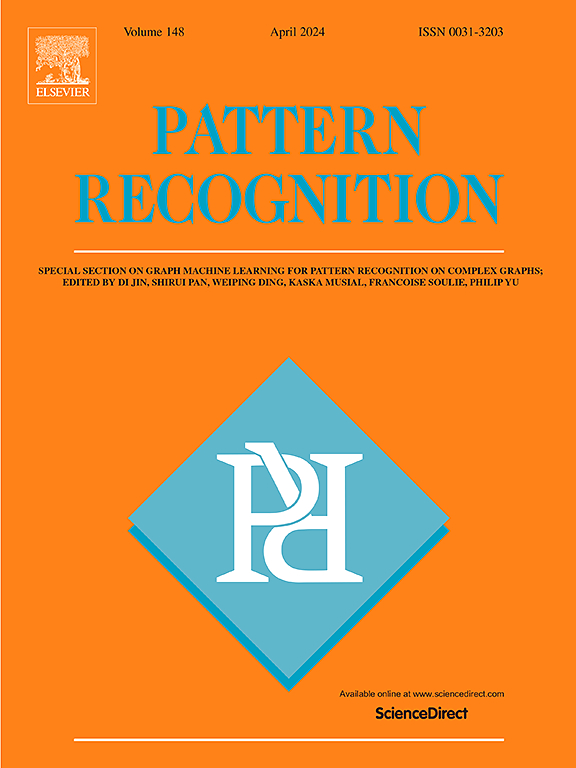MHAN: Multi-head hybrid attention network for facial expression recognition
IF 7.5
1区 计算机科学
Q1 COMPUTER SCIENCE, ARTIFICIAL INTELLIGENCE
引用次数: 0
Abstract
Integrating Facial Expression Recognition (FER) with deep learning techniques has significantly enhanced emotion analysis performance in the past decade. Convolutional neural networks (CNNs) and attention mechanisms facilitate the automatic extraction of complex features from facial expressions. However, current methods often face challenges in accurately capturing subtle variations in expressions, tend to be computationally intensive, and are susceptible to overfitting. To address these challenges, this paper proposes a lightweight FER model based on multi-head hybrid attention networks (MHAN). It designs two innovative modules: efficient local attention mixed feature network (ELA-MFN) and multi-head hybrid attention mechanism (MHAtt). The former integrates multi-scale convolutional kernels with the ELA attention mechanism to enhance feature representation while ensuring precise localization of critical areas, all within a lightweight framework. The latter utilizes multiple attention heads to generate attention maps and capture subtle distinctions in expressions. With only 4.27M parameters (94% reduction from POSTER’s 71.8M), MHAN effectively reduces computational resource requirements, and can be efficiently implemented for both fully supervised and semi-supervised learning tasks. And it employs a smooth label loss function solving overfitting issue. We have validated the effectiveness of MHAN over three public datasets RAF-DB, AffectNet, and FERPlus, including cross-dataset tests. The results show that MHAN outperforms state-of-the-art models in terms of accuracy and computational complexity, demonstrating improved robustness. MHAN can also recognize the expressions of non-traditional datasets like sculptures, validating its cross-domain generalization capabilities. The source code is available at https://github.com/hanyao666/MHAN.
面部表情识别的多头混合注意网络
在过去的十年中,面部表情识别(FER)与深度学习技术的结合显著提高了情绪分析的性能。卷积神经网络(cnn)和注意机制有助于从面部表情中自动提取复杂特征。然而,目前的方法在准确捕捉表达式的细微变化方面经常面临挑战,往往需要大量的计算,并且容易过度拟合。为了解决这些问题,本文提出了一种基于多头混合注意网络(MHAN)的轻量级FER模型。它设计了两个创新模块:高效局部注意混合特征网络(ELA-MFN)和多头混合注意机制(MHAtt)。前者将多尺度卷积核与ELA注意机制集成在一起,以增强特征表示,同时确保关键区域的精确定位,所有这些都在轻量级框架内完成。后者利用多个注意头生成注意图,捕捉表情中的细微差别。MHAN仅使用了427万个参数(比POSTER的71.8万个参数减少了94%),有效地减少了计算资源需求,并且可以有效地实现全监督和半监督学习任务。该算法采用光滑的标签损失函数来解决过拟合问题。我们在三个公共数据集RAF-DB、AffectNet和FERPlus上验证了MHAN的有效性,包括跨数据集测试。结果表明,MHAN在精度和计算复杂度方面优于最先进的模型,显示出更好的鲁棒性。MHAN还可以识别非传统数据集的表达式,如雕塑,验证其跨域泛化能力。源代码可从https://github.com/hanyao666/MHAN获得。
本文章由计算机程序翻译,如有差异,请以英文原文为准。
求助全文
约1分钟内获得全文
求助全文
来源期刊

Pattern Recognition
工程技术-工程:电子与电气
CiteScore
14.40
自引率
16.20%
发文量
683
审稿时长
5.6 months
期刊介绍:
The field of Pattern Recognition is both mature and rapidly evolving, playing a crucial role in various related fields such as computer vision, image processing, text analysis, and neural networks. It closely intersects with machine learning and is being applied in emerging areas like biometrics, bioinformatics, multimedia data analysis, and data science. The journal Pattern Recognition, established half a century ago during the early days of computer science, has since grown significantly in scope and influence.
 求助内容:
求助内容: 应助结果提醒方式:
应助结果提醒方式:


